Search results for: 'For'
-
 Egyptian funerary figurine for Nefer-hotep
Egyptian funerary figurine for Nefer-hotepInteresting ushabti from Memphis dating to the late 19th Dynasty, New Kingdom. The owner was an official from the Temple of Ptah.
Price: on request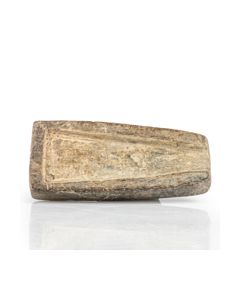 Bronze Age casting mould for a flat axe
Bronze Age casting mould for a flat axeOne half of a stone mould for bronze casting an axe head. The equipment is from a workshop of the 2nd Millennium BC, probably from the Carpathian Basin. From the famous Guttmann Collection. This mould was published in a work by Born and Hansen.
Price: on request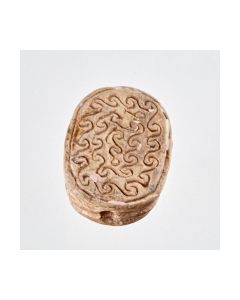 Scarab with spiral design and symbol for good luck
Scarab with spiral design and symbol for good luckThe Egyptian scarab from the Second Intermediate Period is decorated with a geometrical pattern. A nefer hieroglyph stands for good luck.
Price: on request Sumerian cuneiform clay tablet
Sumerian cuneiform clay tabletSmall tablet with drill hole. Cuneiform receipt for bricks or pottery. Very well preserved piece from the late 3rd millenium BC.
Price: on request Scarab with magic formula
Scarab with magic formulaThe stamp shows the anra formula in a cartouche. The amulet should thus serve a magic or ritual purpose for its owner.
Price: on request Cuneiform tablet from Umma
Cuneiform tablet from UmmaRecord of beer and bread rations for laborers. Probably from the Bronze Age city of Umma. The cuneiform tablet was studied and conserved at Yale University.
Price: on request Clay tablet with cuneiform text
Clay tablet with cuneiform textSmall cuneiform writing tablet with well preserved text on both sides.
Price: on request Old Babylonian cuneiform tablet
Old Babylonian cuneiform tabletVery nicely preserved clay tablet with cuneiform legal text from Old Babylonian times.
Price: on request Mesopotamian cuneiform tablet
Mesopotamian cuneiform tabletSmall clay tablet with well preserved Sumerian cuneiform writing. From Mesopotamia, probably from Uruk.
Price: on request Clay tablet with cuneiform script
Clay tablet with cuneiform scriptSmall tablet with well preserved cuneiform engravings. Interesting Bronze Age document from Mesopotamia.
Price: on request Clay tablet with cuneiform text
Clay tablet with cuneiform textSmall cuneiform writing tablet with well preserved text on both sides.
Price: on request Flint blade and stone mould
Flint blade and stone mouldInteresting group of two artefacts. A Neolithic flint blade from Egypt and a Bronze Age mould for casting or hammering metal.
Price: on request Old Babylonian cylinder seal
Old Babylonian cylinder sealThis Old Babylonian seal with a worship scene is made from lapis lazuli, a very rare choice for this period.
Price: on request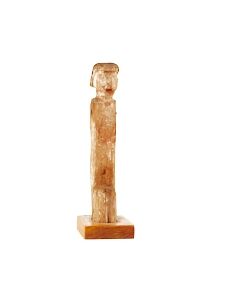 Egyptian wooden statuette
Egyptian wooden statuetteFigure painted in black and red from the 12th dynasty of ancient Egypt. Probably part of a larger wooden model for a tomb.
Price: on request Egyptian Kohl vessel
Egyptian Kohl vesselThe small stone pot of nicely polished granite was used for Kohl, the eye cosmetic of the ancient Egyptians. From the time between Middle Kingdom and New Kingdom.
Price: on request Mycenaean pottery stirrup jar
Mycenaean pottery stirrup jarCharacteristic type of vessel for the Mycenaean civilization in Bronze Age Greece. From the peak of Mycenaean pottery production in the 14th century BC.
Price: on request Egyptian wooden statuette
Egyptian wooden statuetteFigure painted in black and red from the 12th dynasty of ancient Egypt. Probably part of a larger wooden model for a tomb.
Price: on request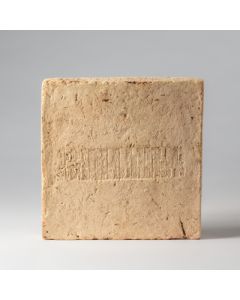 Sumerian brick with royal inscription
Sumerian brick with royal inscriptionClay tile from the temple of Eridu, donated around 2040 BC. Dedicated by Amar-Sin, king of the Third Dynasty of Ur. Studied for a research project in 1983.
€6,000 Cylinder Seal from the late Uruk period
Cylinder Seal from the late Uruk periodSmall seal made of appealing igneous rock. The engraved wave pattern is typical for the late Uruk period of Mesopotamia.
Price: on request Two Near Eastern weapon points
Two Near Eastern weapon pointsGroup of two bronze points for small spears or large arrows from the Bronze or Early Iron Age. With a nice green patina.
Price: on request Scaraboid from the Middle Kingdom
Scaraboid from the Middle KingdomThe stamp shows hieroglyphs with a title for the king of Upper and Lower Egypt. This scaraboid is described in the catalogue of Irène Gautier-Vodoz.
Price: on request Egyptian faience ring showing Bes and Taweret
Egyptian faience ring showing Bes and TaweretThe finger ring with its scene on the plate must have served a protective function for an expectant mother. New Kingdom, approx. 1550 to 1070 BC.
Price: on request Slender Egyptian stone beaker
Slender Egyptian stone beakerThe small and tall stone vessel is made of alabaster. From the collection of Egyptologist Professor Wiedemann.
Price: on request Egyptian stone beaker
Egyptian stone beakerThe elegant stone vase was probably used as an ointment vessel. 5th to 6th dynasty of ancient Egypt, Old Kingdom.
Price: on request Egyptian chalice
Egyptian chaliceThe thin-walled stone cup is reminiscent of a lotus bud. From the collection of Egyptologist Professor Wiedemann. 18th dynasty of Ancient Egypt.
Price: on request Clay ushabti
Clay ushabtiTall Egyptian funerary statuette from the New Kingdom. From the collection of the archaeologist and artist Erich Charlier.
Price: on request Mesopotamian stamp seal in bull shape
Mesopotamian stamp seal in bull shapeThe magnificent seal is from the Jemdet Nasr period. The stamp shows quadrupeds and a scorpion. Published in a book about the Epstein collection.
Price: on request Painted Bronze Age cup
Painted Bronze Age cupThe well preserved Bronze Age pottery bears a geometric painted pattern. Acquired in 1977 at Davies Antiques in London, it is claimed to have been found in Syria.
Price: on request Large published cypriot jug, ex Christie's
Large published cypriot jug, ex Christie'sExcellently preserved, rare for such a large object. 1977 on exhibition in the Bielefeld Museum of Fine Arts. From an old German private collection, acquired at Christie's in the late 1960s or early 1970s. Coming with an ArtLoss certificate.
Price: on request Beaker of the Urnfield culture
Beaker of the Urnfield culturePottery vessel with fantastic decoration dating to the Urnfield period, the transition between Bronze Age and Iron Age in Central Europe. Found in Southern Germany. 1200 to 800 BC.
€600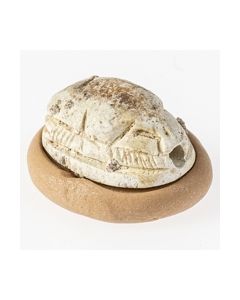 Canaanite scarab with pseudo hieroglyphs
Canaanite scarab with pseudo hieroglyphsThe scarab amulet was made during the Second Intermediate Period of Egypt or slightly later in Canaan. It has pseudo hieroglyphs on the bottom side.
Price: on request Egyptian model vessels of a founding ceremony
Egyptian model vessels of a founding ceremonyA group of seven miniature bowls and three miniature vases made of clay. Once filled with offerings and used ritually during a foundation stone laying ceremony. Dating to the Old Kingdom, around 2500 BC.
Price: on request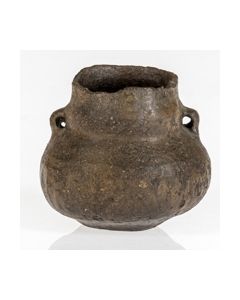 Vessel of the Urnfield culture
Vessel of the Urnfield cultureNicely preserved pottery dating to the Urnfield period, the transition between Bronze Age and Iron Age in Central Europe. Found in Southern Germany. 1200 to 800 BC.
Price: on request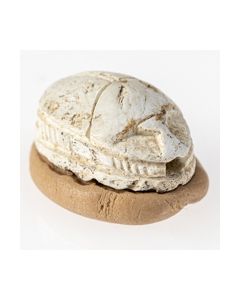 Canaanite scarab with pseudo hieroglyphs
Canaanite scarab with pseudo hieroglyphsThe scarab amulet was made during the Second Intermediate Period of Egypt or slightly later in Canaan. It has pseudo hieroglyphs on the bottom side.
Price: on request Mesopotamian cylinder seal
Mesopotamian cylinder sealMade of beautiful red stone, worked with the drill. From the transitional period between Chalcolithic and Early Bronze Age in Mesopotamia.
Price: on request Egyptian scarab with cross design
Egyptian scarab with cross designAmulet seal with complex design of crosses on the underside. Second Intermediate Period of ancient Egypt.
Price: on request

